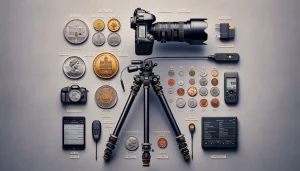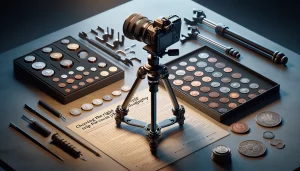Action photography is a thrilling genre that captures the peak moments of dynamic scenes, from the intense focus of an athlete in motion to the wild energy of natural events. As an educational resource at PhotoProGuides, we are dedicated to helping both aspiring and seasoned photographers master this exciting field. This article delves into the essential techniques you need to capture stunning action photographs, ensuring each shot reflects the intensity and emotion of the moment.
Choosing the Right Camera Settings
1. Shutter Speed: The cornerstone of action photography is shutter speed. To freeze rapid motion effectively, you’ll need a fast shutter speed. Generally, speeds of 1/500s or faster are recommended. This setting ensures that your subject remains crisp and clear, without any motion blur. However, for more artistic shots, such as those capturing a runner or a speeding car, a slightly slower speed like 1/250s can add a motion blur to the background, emphasizing the speed while keeping the main subject sharp.
2. Aperture: Aperture plays a dual role in controlling both the exposure and the depth of field. A wider aperture (lower f-number) allows more light into the lens, which is perfect for fast shutter speeds used in low-light conditions. It also creates a shallow depth of field, helping your subject stand out against a blurred background, thus emphasizing the action without distractions.
3. ISO Settings: Balancing ISO settings is crucial in action photography. A higher ISO can compensate for lower light conditions but can also introduce noise into your images. Start with the lowest ISO that allows you to achieve the desired shutter speed and aperture, then adjust as needed depending on the lighting conditions of your scene.
Utilizing Continuous Shooting Mode
To never miss a beat of the action, switch your camera to continuous or burst mode. This mode allows you to take multiple frames per second, significantly increasing your chances of capturing that perfect moment where all elements align. Whether it’s the explosive start of a sprinter or a bird taking flight, burst mode is invaluable.
Mastering Timing and Anticipation
Understanding the rhythm of the event you are capturing is as critical as any camera setting. For sports, familiarize yourself with the game’s flow to predict when key actions might occur. In wildlife photography, observing and understanding animal behavior can help you anticipate a bird in flight or a predator’s pounce. This knowledge lets you be ready at the right moment to press the shutter.
Experimenting with Panning
Panning is a technique that combines a slower shutter speed with camera movement to follow a moving subject. The result is a sharply focused subject against a blurred background, conveying a strong sense of motion. To master panning, practice tracking your subject smoothly with your camera as it moves parallel to you, using a shutter speed of around 1/30s to 1/60s.
Employing Proper Lighting Techniques
Lighting can make or break your action shots. Natural light is always preferred, but it isn’t always sufficient, especially indoors or in heavily shaded areas. In these cases, external sources such as flash or continuous lights can help. Use flash to freeze fast action, or experiment with slow-sync flash for creative effects like motion trails combined with a sharp subject

Focusing on Composition and Angles
Dynamic angles and thoughtful composition add a dramatic flair to action shots. Don’t just stick to eye level—try shooting from high above or down low. These perspectives can make your images stand out. Additionally, incorporating elements like leading lines or framing your subject within the environment can add depth and interest to your compositions.
Post-Processing to Enhance Your Shots
After capturing the action, post-processing plays a pivotal role in polishing your images. Basic adjustments such as tweaking the exposure, contrast, and saturation can significantly enhance your photos. Advanced techniques like sharpening the subject or applying color grading can also be used to direct the viewer’s focus and convey the desired mood.
Conclusion
Action photography is both challenging and immensely rewarding. By mastering these techniques, from camera settings to post-processing, you can transform fleeting moments into memorable, dynamic art. Remember, the key to success in action photography lies in practice and patience. So, take your camera, head out, and start capturing the energy and motion of the world around you.
Stay tuned for more in-depth articles that explore each of these techniques further, only on PhotoProGuides. Whether you’re a novice hoping to improve your photography skills or a professional looking to refine your technique, our comprehensive guides are designed to support your journey in capturing the extraordinary.












